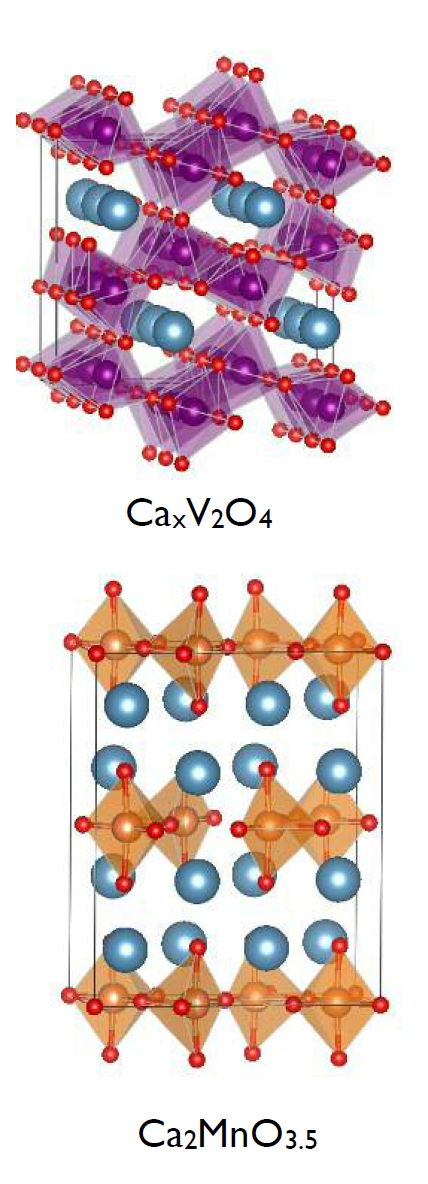New electrodes for calcium batteries

New active materials for calcium-based secondary (rechargeable) batteries. They can be used as positive electrodes and enable a cell voltage > 3V coupled to calcium metal negative electrodes and organic oelectrolyte solutions.
Lithium based secondary batteries are widely used nowadays. They have cells with a positive and a negative electrode whose active materials are capable of accepting and releasing lithium ions, as well as an electrolyte arranged between them and including lithium ions.
Calcium is much more abundant in nature than lithium and bivalent, so that two electrons are exchanged per each calcium ion. Calcium metal could be a suitable negative electrode material for rechargeable batteries with high energy density, provided positive electrodes are developed which enable high cell voltage. Calcium batteries are underdeveloped due, amongst others, to the difficulties in such positive electrode materials.
We describe two calcium transition metal oxides which can be used as active materials of a positive electrode in a clacium-based secondary battery Ca2MnO3.5 and CaXV2O4.